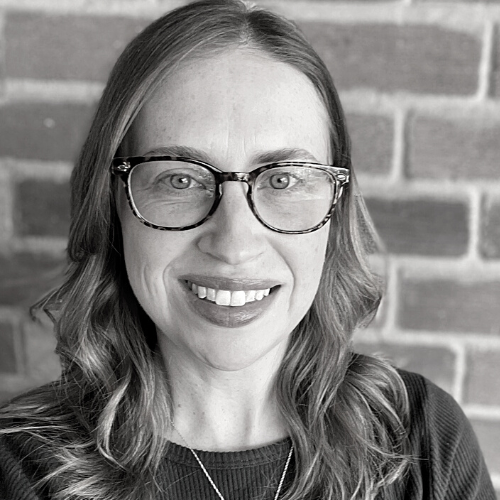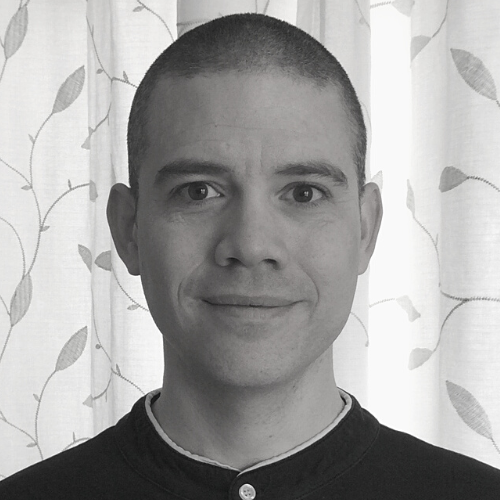Geometry
Placement Information
Placement Process
One critical factor for restful learning is the proper placement of students. If you are unsure which level is the best fit for your student, reach out to the instructor you are considering. Once registered, anticipate contact regarding placement evaluations from instructors by May 15th and throughout the summer. Students must be registered to enter the placement process. Early placement exams may allow time for tutoring or additional review based on the outcomes. See more about placement evaluations in our Student-Parent Handbook.
Math Placement Process
For registered students, please anticipate contact regarding placement evaluations from instructors by May 15th and throughout the summer. Students must be registered in a math course to receive a placement assessment. Math classes have a detailed and specific placement process.
Read more about the math placement process here.
Watch the math placement process video with our department chair, Dr. Fransell Riley, here.
See the Math Scope and Sequence here.
Required Materials:
Books and supplies are not included in the purchase of the course.
Sections with Amy Sherman and Matthew Davenport
-
Euclid Elements, Heath Translation (choose one option below)
- Free web version: Clark University, org
- Free PDF: Wilbour Hall, Univ Texas with Greek
- Purchase Print Book: Amazon (this should not be necessary unless it is your preference)
- This book will provide our classical viewpoint of geometry, including writing proofs. We will discuss Euclid’s proofs, compare them to modern textbook proofs, and write our own
-
Digital Textbook: Reveal Geometry with ALEKS**
- The instructor does not teach from the book but uses it for example problems, class work problems, student reference, and course structure. The book represents the modern viewpoint of geometry; solving geometric problems using algebra, which students need to learn to prepare for future courses, real world applications, and future exams. Notwithstanding, this book also covers logical reasoning and writing
- ALEKS delivers practice problems to students in a manner that promotes mastery and retention. Students work problems on paper and turn them in to the instructor for review. Students are required to correct their work using ALEKS’ step-by-step solution; thus, they learn from their errors before trying another similar problem. This provides students the opportunity to learn to solve geometry on paper and digitally, which is a 21st century
- Purchased via instructor ($40) by 5/31. Info. will be sent via email in
-
Mathematics for the Nonmathematician (used print or digital is ok)
- This text will be used to learn some of the related history and philosophy of the concepts covered.
- Digital tablet. Choose from: Wacom Intuos, Huion, XP-Pen, or other.
- Three-ring notebook with five dividers or 5 subject spiral
- Binder Pencil Pouch with multiple sharpened pencils, erasers, protractor, and a drawing com- pass or bullseye compass, square patty paper (we do not need this much patty paper, so you can opt to use typing paper or similar) — these are examples only, less expensive items are acceptable
- Scientific Calculator Examples: TI, Sharp, other
- Notebook Paper and Graph paper
- Free web accounts: desmos.com, ziteboard.com, desmos.calculator,
- Ziteboard is used often as a virtual classroom chalkboard, the others are used sparingly
In addition, the instructor will provide pdf files or problems from various sources.
OPTIONAL MATERIALS:
- Paper versions of the digital textbook (this would be in addition to the digital text, not instead of): Textbook Vol 1 and Textbook Vol 2. Used from Amazon: Textbook Volume 1 and Textbook Volume 2
Sections with Eric Robinson
- Khan Academy (free account)
- IXL ($20)

Amy Sherman is an experienced Secondary Math teacher. She has spent the past 16 years teaching grades 6-12 in public and private schools, and as a private tutor. She holds a B.S. in Organization Communication from Oklahoma Christian University, and holds Texas Educator Certifications in grades 4-8 and grades 8-12 Mathematics. As an educator she works to create opportunities for students to succeed and grow in confidence, as well as opportunities to struggle without being defeated. Her goal for her class is to have a learning environment that encourages contemplation and a genuine appreciation for the subject matter. She has a desire for her students to see the whole in every part, and to recognize the beauty and patterns in mathematics.
Amy lives in Houston with her husband and 3 children. They are active parishioners at St. Anthony the Great Orthodox Church, where Amy teaches Church School and serves on the Church School Leadership Committee. In her spare time, she enjoys cheering on her kids at their sporting events, and watching old movies with her family and their orange cat, Todd. [email protected]

Eric Robinson has a MFA (Master of Fine Arts) degree in printmaking from Iowa State University and a BS in secondary math education from Western Governors University. Eric and his wife homeschool, so he has taught math from number recognition through Calculus 2. Having taught in private Christian (protestant and Catholic) schools and in public schools as well as tutoring in person and online, he is excited to teach courses in the Great Hall of Scholé Academy so that learning can be the true focus.
Eric was attracted to Scholé Academy for the commitment to restful learning. Eric loves the beauty of mathematical reasoning. He loves the feeling of accomplishment and confidence that comes from learning math. He loves the lightbulb moments, and he loves the real skills math builds--skills that make so many things doable and possible.
Eric also loves the Word of God. God is a God of truth and order, and so we find in scripture truth and logical arguments that help us to understand creation--God, ourselves, one another, redemptive history, and our hope in Christ Jesus. Eric loves sharing the Word of God to start every course session. Eric does that for the same reason he learns and teaches math: because doing so enriches us and helps us to discover the truths God has made. As Proverbs 25:2 says, "It is the glory of God to conceal a matter, but the glory of kings is to search out a matter." [email protected]
.png?cache=false)
Matthew Davenport earned his B.S. in Mechanical Engineering at Tufts University with a second major in Philosophy. After working five years with the US Army as a project engineer, he left to study the philosophy of Soren Kierkegaard at St. Olaf College and renewed his faith at the English L’Abri Fellowship. Afterwards, he found his calling as a Classical Christian educator at Samuel Fuller School, where he taught math, science and logic and helped to launch their high school expansion. He currently works for Massachusetts General Hospital as a project manager in the Cancer Center.
Matthew lives in Worcester, MA with his wife and son, where he enjoys hiking, disc-golfing, gardening, playing piano, and learning more each day about the truth, goodness, and beauty of God’s creation. [email protected]
Quarter 1
- Construct Logical Arguments (statements, conditionals)
- Conjectures and counterexamples
- Deductive vs Inductive Reasoning
- Introduce Writing direct proofs
- Constructions or Excerpts of Euclid Elements Book
- Points, Lines, and Planes
- Angle Relationships
- 2D and 3D Figures
- Transformations and Symmetry
- Triangles and Congruence (SAS, ASA, etc...)
- The order in which topics are presented may vary according to instructor and course section.
Quarter 2
- Introduce writing indirect proofs
- Relationships in Triangles (points of concurrency, inequalities)
- Quadrilaterals (conditions for each shape)
- Similarity (AA, SSS, SAS, Triangle Proportionality)
- Right Triangles (Py. Thm, & converse, Special Right Tri, Geometric Mean)
- The order in which topics are presented may vary according to instructor and course section.
Quarter 3
- Intro to Sin, Cos, Tan
- Applications of Trig
- Law of Sines and Cosines
- Circles (angles, arcs, chords, inscribed, tangents, secants)
- The order in which topics are presented may vary according to instructor and course section.
Quarter 4
- Equations of Circles and Parabolas
- Area, Surface Area, and Volume (using Trig to calculate)
- Sample Spaces
- Probability and Counting
- Permutations and Combinations
- Conditional Probability
- Two-Way Frequency Tables
- The order in which topics are presented may vary according to instructor and course section.
![]() Computer: You will
need a stable, reliable computer, running with a processor with a speed of 1 GHz or better
on one of the following operating systems: Mac OS X with Mac OS 10.7 or later; Windows 8,
7, Vista (with SP1 or later), or XP (with SP3 or later). We do not recommend using an
iPad or other tablet for joining classes. An inexpensive laptop or netbook would be much
better solutions, as they enable you to plug an Ethernet cable directly into your computer.
Please note that Chromebooks are allowed but not preferred, as they do not support certain
features of the Zoom video conference software such as breakout sessions and annotation,
which may be used by our teachers for class activities.
Computer: You will
need a stable, reliable computer, running with a processor with a speed of 1 GHz or better
on one of the following operating systems: Mac OS X with Mac OS 10.7 or later; Windows 8,
7, Vista (with SP1 or later), or XP (with SP3 or later). We do not recommend using an
iPad or other tablet for joining classes. An inexpensive laptop or netbook would be much
better solutions, as they enable you to plug an Ethernet cable directly into your computer.
Please note that Chromebooks are allowed but not preferred, as they do not support certain
features of the Zoom video conference software such as breakout sessions and annotation,
which may be used by our teachers for class activities.
![]() High-Speed Internet Connection:
You will also need access to high-speed Internet, preferably accessible via Ethernet
cable right into your computer. Using Wi-Fi may work, but will not guarantee you the optimal
use of your bandwidth. The faster your Internet, the better. We recommend using a connection
with a download/upload speed of 5/1 Mbps or better. You can test your Internet connection here.
High-Speed Internet Connection:
You will also need access to high-speed Internet, preferably accessible via Ethernet
cable right into your computer. Using Wi-Fi may work, but will not guarantee you the optimal
use of your bandwidth. The faster your Internet, the better. We recommend using a connection
with a download/upload speed of 5/1 Mbps or better. You can test your Internet connection here.
![]() Webcam: You may
use an external webcam or one that is built in to the computer. Webcam Recommendations:
Good (PC only) | Best (Mac and PC)
Webcam: You may
use an external webcam or one that is built in to the computer. Webcam Recommendations:
Good (PC only) | Best (Mac and PC)
![]() Headset: We recommend
using a headset rather than a built-in microphone and speakers. Using a headset reduces the
level of background noise heard by the entire class. Headset Recommendations: USB | 3.5mm
Headset: We recommend
using a headset rather than a built-in microphone and speakers. Using a headset reduces the
level of background noise heard by the entire class. Headset Recommendations: USB | 3.5mm
![]() Zoom: We use a web
conferencing software called Zoom for our classes, which enables students and teachers to
gather from around the globe face to face in real time. Zoom is free to download and easy
to use.
Zoom: We use a web
conferencing software called Zoom for our classes, which enables students and teachers to
gather from around the globe face to face in real time. Zoom is free to download and easy
to use.  To
download Zoom:
To
download Zoom:
- Visit zoom.us/download.
- Click to download the first option listed, Zoom Client for Meetings.
- Open and run the installer on your computer.
- In August, students will be provided with instructions and a link for joining their particular class.
![]() Scanner: In this
class, students frequently submit homework assignments by scanning pages from their workbooks.
Students and/or their parents should have easy access to a scanner and the ability to use it.
Scanner: In this
class, students frequently submit homework assignments by scanning pages from their workbooks.
Students and/or their parents should have easy access to a scanner and the ability to use it.
Step 1
Step 2
Step 3
Step 4
Explore our courses!
First, read the available course descriptions, noting prerequisites, target grades, and course objectives. If you think your student is prepared for the course, go ahead and register. After registration, a placement assessment may be provided to students, depending on the course and the student’s previous enrollment with Scholé Academy. Registration is finalized when the student’s placement assessment has been returned by the course instructor with placement confirmation.
All Courses | By Subject | By Grade
Read the Student-Parent Handbook.
Please take careful note of our teaching philosophy, our technology requirements, our school policies, the parent agreement, and the distinctions between our grade levels.
Double-check the course section dates and times.
Make sure they don't conflict with other activities in your schedule or other courses you are purchasing. Our system will not catch double-bookings!
You're ready to add course selections to your cart!
Our Assistant to the Principal will be in touch with you after your enrollment to help you with next steps, including any placement evaluations that may be required for your course selections.
This registration will be finalized when the student's placement assessment has been returned by the course instructor with placement confirmation.
